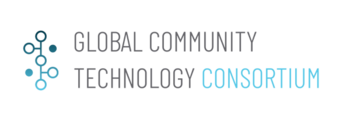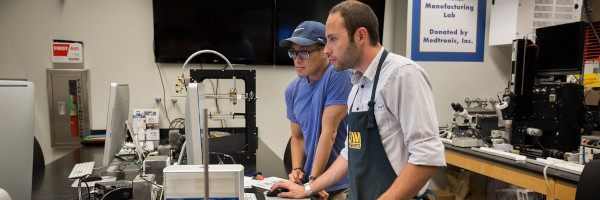Re-shoring Workforce Development
| Re-shoring Workforce Development | |
|---|---|

| |
 Internships in Advanced Manufacturing | |
| Team Organizations | Oregon Institute of Technology CodePDX Link Oregon Technology Association of Oregon PilotCity |
| Team Leaders | Wilfred Pinfold Derick Lee Hugh Harker |
| Participating Municipalities | Portland OR |
| Status | Master Planning |
| Document | None |
Description
The reshoring of manufacturing to North America, driven by rising labor costs abroad, geopolitical tensions, technological advancements, and sustainability goals, is transforming industries like semiconductors, EVs, and pharmaceuticals. While reshoring enhances supply chain resilience, reduces emissions, and fosters local job creation, it faces challenges such as higher labor costs, a shortage of skilled workers, and infrastructure needs. Workforce development is critical, requiring technical skills in robotics, CNC machining, and data analysis, alongside problem-solving and adaptability. Strategies include apprenticeships, STEM education, and industry partnerships, with experiential learning playing a vital role in building a skilled, innovative workforce ready to thrive in advanced manufacturing.
Challenges
The reshoring of manufacturing faces significant challenges, including higher labor costs in North America compared to overseas production, a shortage of skilled workers to meet the demands of advanced manufacturing technologies, and gaps in infrastructure to support new or expanding operations. Additionally, companies must navigate the complexities of implementing emerging technologies like robotics and AI while ensuring workforce training keeps pace. Supply chain realignment and meeting sustainability goals further complicate the transition. Collaboration between industry, government, and educational institutions is critical to addressing these obstacles, fostering a skilled workforce, and ensuring long-term success in reshoring initiatives.
Solutions
This initiative plans to address reshoring challenges by investing in workforce development programs that emphasize advanced manufacturing skills, including training in robotics, AI, and other emerging technologies. Partnerships with educational institutions, government agencies, and industry stakeholders will ensure alignment between training programs and workforce needs. Infrastructure gaps will be bridged through public-private investments in facilities and technology, while supply chain realignment will be supported by creating localized networks and fostering collaboration across sectors. Sustainability will be integrated by promoting energy-efficient practices and leveraging clean technologies. These solutions aim to build a robust, skilled workforce, modernize infrastructure, and enhance the competitiveness of reshored operations.
Major Requirements
This initiative requires a coordinated effort involving substantial funding, skilled labor, and advanced technology. Financial support from public and private sectors is essential to develop training programs, upgrade infrastructure, and incentivize reshoring. Collaboration between industry, government, and educational institutions is critical to align workforce training with industry needs and to create effective supply chain networks. Regulatory support is needed to streamline processes and encourage sustainable practices. Additionally, access to cutting-edge technology and innovation is vital to ensure competitiveness, along with a commitment to sustainability through the adoption of energy-efficient systems and renewable energy integration.
Performance Targets
| Key Performance Indicators (KPIs) | Measurement Methods |
|---|---|
|
|
Standards, Replicability, Scalability, and Sustainability
This initiative should leverage existing standards in areas such as advanced manufacturing processes (e.g., ISO 9001 for quality management), clean energy deployment (e.g., ISO 50001 for energy management), and workforce training (e.g., National Institute for Standards and Technology [NIST] guidelines). It should also adopt cybersecurity frameworks like NIST Cybersecurity Framework to ensure secure integration of digital technologies. However, new standards may need to be developed to address gaps specific to regional priorities, such as metrics for sustainable supply chain practices, guidelines for integrating renewable energy technologies into manufacturing operations, and certifications for emerging skills in semiconductor design and advanced manufacturing. Collaborative efforts with standard-setting bodies, industry stakeholders, and government agencies will be crucial to ensure these standards are both comprehensive and widely adopted.
Cybersecurity and Privacy
The cybersecurity requirements of this initiative include implementing robust measures to protect sensitive data, intellectual property, and critical infrastructure involved in semiconductor design, advanced manufacturing, and clean energy technologies. This requires adopting frameworks like the NIST Cybersecurity Framework and compliance with ISO/IEC 27001 for information security management. End-to-end encryption, secure authentication mechanisms, and network monitoring tools must be employed to safeguard data integrity and prevent unauthorized access. Training programs for workforce awareness of cybersecurity best practices are essential to mitigate human-error vulnerabilities. Additionally, secure integration with third-party systems, supply chain security measures, and contingency plans for incident response must be established to ensure resilience against potential cyber threats.
Impacts
This initiative is expected to significantly advance semiconductor design and clean energy manufacturing, strengthening technological leadership and economic competitiveness. By fostering innovation, it will enhance workforce skills, create high-paying jobs, and drive sustainable development. Collaboration among academic, industrial, and government entities will accelerate the adoption of cutting-edge technologies, reducing time to market for clean energy solutions and advanced electronic components. The initiative will also support the resilience and modernization of critical infrastructure, ensuring alignment with national priorities like the CHIPS Act and clean energy transition. Indirect benefits include boosting regional economic growth, improving supply chain robustness, and advancing climate goals through the promotion of energy-efficient technologies.
Demonstration/Deployment
This initiative can be demonstrated through pilot projects that showcase the integration of advanced semiconductor design and clean energy manufacturing technologies. Collaborative prototypes developed by academic, industrial, and government partners can highlight innovative applications, such as high-efficiency power electronics for renewable energy systems or advanced chips for smart grid applications. Live demonstrations at partner facilities, supported by real-time data analytics and operational testing, can validate performance metrics like efficiency, scalability, and cost-effectiveness. Additionally, hosting workshops and public showcases at trade and academic conferences can provide hands-on experiences, while publishing case studies and technical reports will document achievements and share best practices to inspire broader adoption.